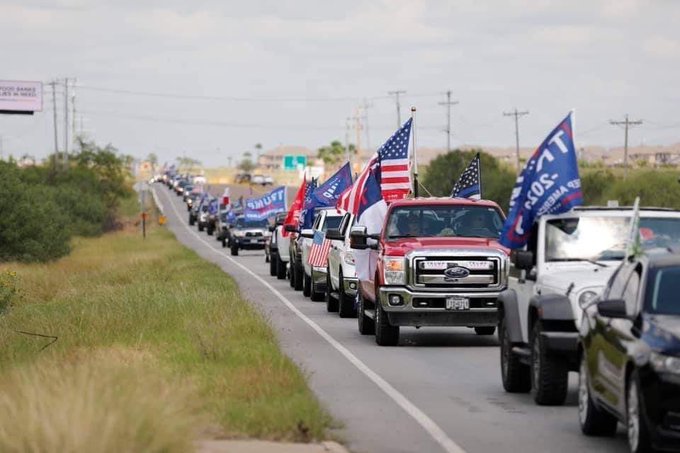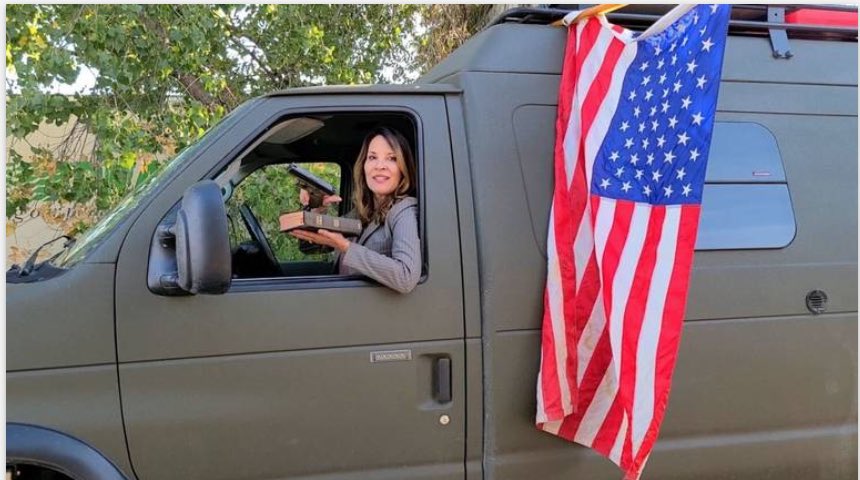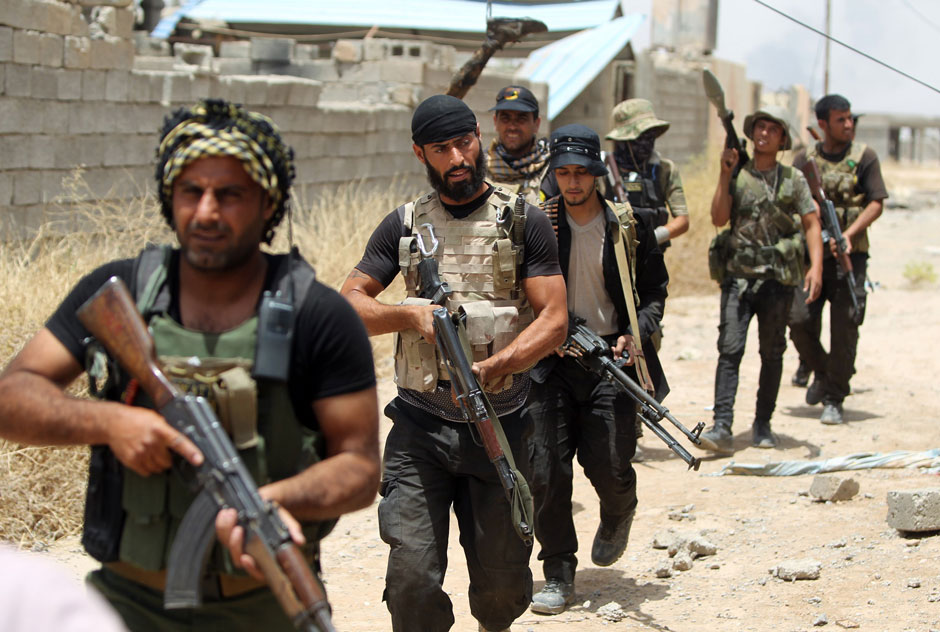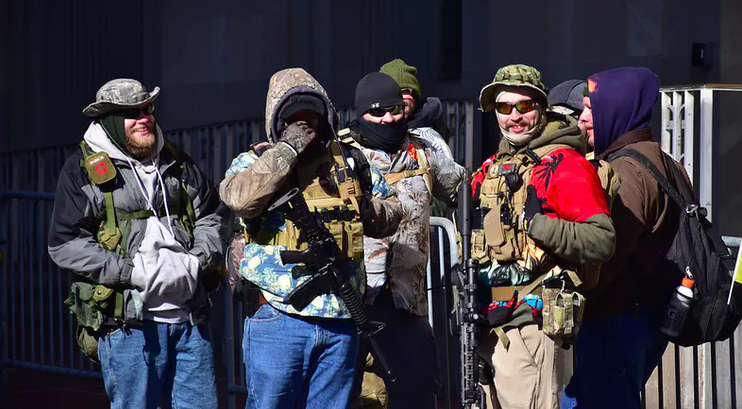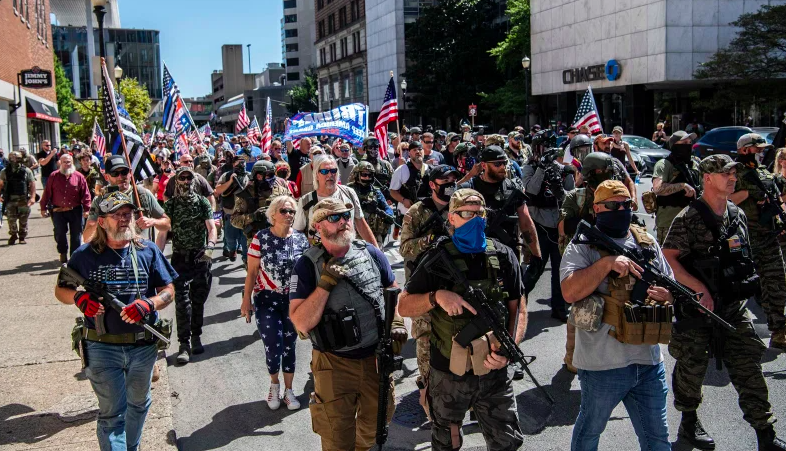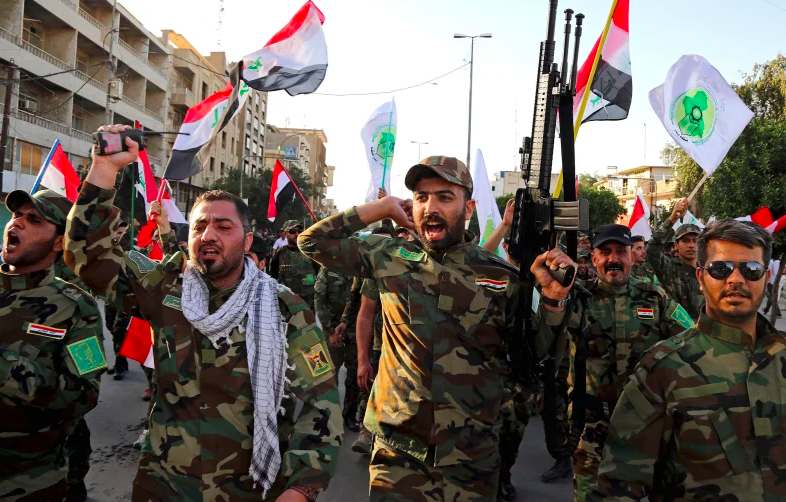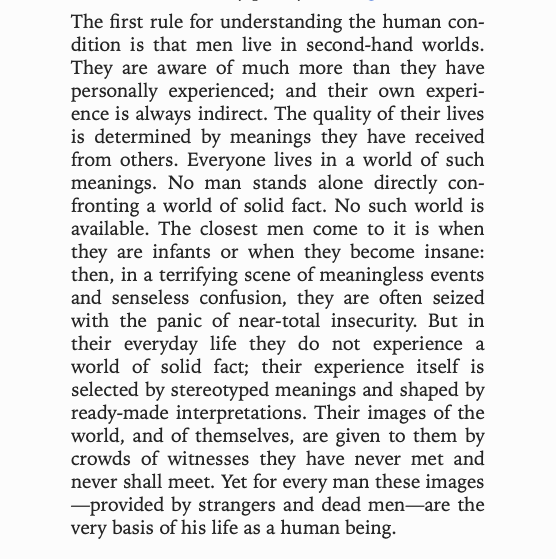1. For decades, depictions of the War on Terror in news, movies, and video games repeated potent imagery that became motifs—"the convoy" + "holy book and gun" etc.
It makes *total* sense that Americans would begin to adopt that same aesthetic for their political spectacle...
It makes *total* sense that Americans would begin to adopt that same aesthetic for their political spectacle...
2. Comparing these images to ISIS convoys or the Taliban or Iraqi militias is valid, not because it says something meaningful about any shared illiberal ideology, but because of the shared aesthetic, which was created during the long War on Terror.
3. Most of the focus on media production around the War on Terror has been concerned with how depictions of Islam and the Middle East impact Muslims and Middle Easterners. But what about how those depictions impacted the viewers in America? What was imprinted on them?
4. In his 1981 book Covering Islam, Edward Said wrote on the power of the images being created to depict Islam as "'against' us and 'out there.'"
He was focused on the prejudice created in the mind of the viewers—ordinary Americans. But the impact was always going to be greater.
He was focused on the prejudice created in the mind of the viewers—ordinary Americans. But the impact was always going to be greater.
5. Said writes on the reality-shaping power of images: "On the whole, we tend to disregard or minimize the extent to which we depend for our sense of reality not just on the interpretations and meanings we form individually for ourselves but also on those we receive.”
6. He then quotes from sociologist C. Wright Mills, who might as well be describing the aesthetics of Trumpism and its origins in feelings of insecurity, both stoked and assuaged by mass media.
7. If you have spent your *whole* adult life receiving images of a certain militarized political aesthetic, it will shape your "second-hand world."
You might begin to adopt and utilize the same imagery. You might name your neo-Nazi group after Al Qaeda, for example.
You might begin to adopt and utilize the same imagery. You might name your neo-Nazi group after Al Qaeda, for example.
8. Perhaps this is why this new kind of spectacularly violent politics might also prove uniquely American.
The efforts to editorialize/fictionalize the aesthetics of the War on Terror and the pervasiveness of its imagery in news + media was largely an American phenomenon.
The efforts to editorialize/fictionalize the aesthetics of the War on Terror and the pervasiveness of its imagery in news + media was largely an American phenomenon.
9. Given the unreality of American politics today (see @MacaesBruno's recent writing), exploiting the spectacular-because-they-are-unreal aesthetics of the War on Terror is apt.
Many Americans probably don't have experience with any other kind of political symbolism.
Many Americans probably don't have experience with any other kind of political symbolism.
10. Convoys, flotillas, camouflage, and flaming torches.
Oath-keeping, gun-toting, leader-worshiping.
Americans learned these things, in part, because of the obsessive reproduction of these images to tell us to fear Islam.
Now the scary, second-hand spectacle has come home.
Oath-keeping, gun-toting, leader-worshiping.
Americans learned these things, in part, because of the obsessive reproduction of these images to tell us to fear Islam.
Now the scary, second-hand spectacle has come home.

 Read on Twitter
Read on Twitter